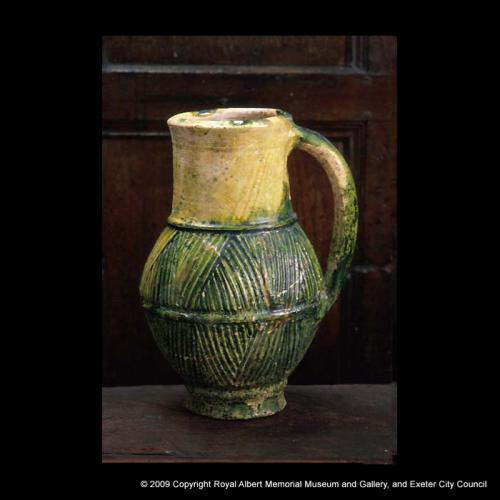An imported North French Jug
Back to Time Period
Among the many fine medieval objects recovered during the rescue excavation which preceded the construction of the Guildhall Shopping Centre in 1972 was this elegant jug. The vessel was recovered in fragments from a shallow wicker-lined well whose timbers had been preserved in the wet clay. Tree-ring analysis of some of the timbers established that they had been felled in AD 1180.
The jug is of very fine white clay, thrown with great skill. The body is scored with shallow grooves, arranged in triangles, over which the lead glaze is enriched with brilliant mottled green, achieved by mixing small amounts of bronze dust into the glaze. Compared to the robust and fairly crude pitchers made in south-west England at this time, the jug would have been a handsome adornment to the table of the household in Waterbeer Street in which it was used.
The jug is the only complete example of its sort ever found in England, although sherds of others are known from excavations in Dublin and Southampton. There is no doubt that all these finds were imported from France, but their precise source remains unknown. An important group of jugs of this sort was found in the 1970s during excavations at Orléans on the Loire, so a source somewhere in the Loire valley seems likely. We hope that further work by French archaeologists will one day find the kilns where they were made.
Acknowledgments: RAM Museum Exeter Archaeology



















